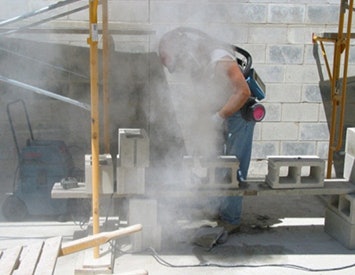 Credit: New Jersey Department of Health
Credit: New Jersey Department of HealthIn order to update 40-year-old standards, the Occupational Safety and Health Administration recently announced a rule with the goal of lowering worker exposure to crystalline silica.
Exposure to the substance, composed of small particles about 100 times smaller than grains of sand, kills hundreds of workers each year and sickens thousands more.
Exposure can cause the condition silicosis which David Michaels, the assistant secretary of labor for occupational safety and health calls “an incurable and progressive disease.”
Silicosis causes an inflammation and scarring of the lungs and, depending on the length of exposure and severity of the condition, can first appear in a worker between 5 and 30 years after exposure.
Silica inhalation can also cause lung cancer, chronic obstructive pulmonary disease and kidney disease.
OSHA estimates the proposed rule would save nearly 700 lives per year and prevent 1,600 new cases of silicosis annually.
According to the OSHA announcement, workers at risk of silica exposure are those “involved in cutting, sawing, drilling and crushing concrete, brick, block and other stone products” as well as “in operations using sand products, such as in glass manufacturing, foundries and sand blasting.”
The new rule would serve as an update to 40-year-old permissible exposure limits (PFLs) that the agency calls “outdated.”
OSHA says the proposed rule hasn’t been completed but ensures says that it “uses common sense measures…designed to give employers flexibility in selecting ways to meet the standard.” One measure would keep silica dust wet so that it doesn’t become airborne in the first place. There will be a standard established for general industry and maritime employment and another for construction.
OSHA will accept public comments on the proposed rule for 90 days following publication in the Federal Register, followed by public hearings. You can learn more on the rule at www.osha.gov/silica.









